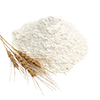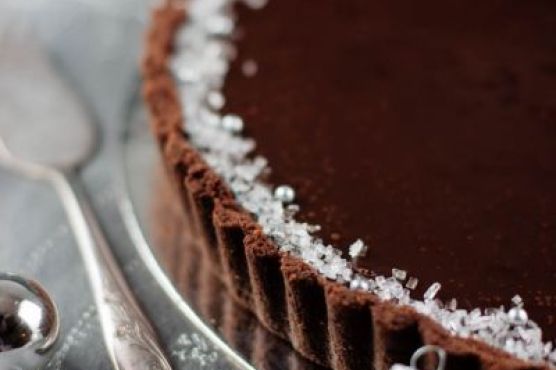How To Make Kugelhopf Breakfast Rolls
How To Make Kugelhopf Breakfast Rolls is a morn meal that serves 12. One serving contains 115 calories, 4g of protein, and 4g of fat. For 25 cents per serving, this recipe covers 5% of your daily requirements of vitamins and minerals. From preparation to the plate, this recipe takes around 45 minutes. 20 people have tried and liked this recipe. This recipe from The Kitchn requires active yeast, almond extract, yolk, and water. It is a good option if you're following a lacto ovo vegetarian diet. With a spoonacular score of 25%, this dish is not so tremendous. Similar recipes include Kugelhopf, Kugelhopf, and Kugelhopf.
Servings: 12
Ingredients:
1 1/2 teaspoons active dry yeast
1 teaspoon almond extract
1 teaspoon cinnamon
2 large eggs
1 3/4 cups flour, divided
1/4 teaspoon salt
1 tablespoon sugar
2 tablespoons unsalted butter, melted
2 tablespoons warm water (not hot)
1/3 cup whole milk, warmed (not hot)
1 large yolk
Equipment:
mixing bowl
whisk
bowl
spatula
pastry cutter
chefs knife
muffin tray
wire rack
toaster
aluminum foil
oven
rolling pin
Cooking instruction summary:
Make the poolish: Stir the water and yeast together in a small mixing bowl until the yeast dissolves, then stir in the milk. Add just 1/2 cup of the flour and stir until it forms a smooth batter, about 100 strokes. Cover the bowl and let this poolish sit for at least 20 minutes or up to 60 minutes. In this time, the poolish should rise to twice its original size and you should see lots of little bubbles on the surface.Stir in the eggs, yolk, and almond extract: In a small bowl, whisk together the eggs, yolk, and almond extract. Stir this into the poolish and mix until completely combined.Mix the dough together: In the bowl of a standing mixer, combine the remaining 1 1/4 cups of flour, the sugar, and the salt. Pour the poolish-egg mixture into the flour and stir until it becomes a wet, shaggy dough.Knead the dough until smooth: Fit the mixer with a dough hook attachment and knead this dough on medium-high speed until it comes together and becomes smooth, five minutes.Add the butter with the mixer running: Reduce the mixer speed to medium and start adding the softened butter in blobs, waiting until the blob is nearly incorporated before adding the next. (The butter needs to be quite soft; work it between your fingers before adding if it's still a bit stiff and chilly from the fridge.) You may need to stop the mixer and scrape down the sides of the bowl during this time.Continue kneading until the dough comes together in a glossy, elastic ball: Once all the butter has been added, increase the mixer speed to medium-high and knead the dough for 10 minutes. The dough should come together in a ball, look glossy and supple, and jiggle like a custard if you tap it with your spatula.Let the dough rise for 1 1/2 hours: Transfer the dough out to a clean bowl, cover, and let rise for about an hour and half, until doubled in size.Refrigerate the dough overnight: Put dough in the refrigerator and let it rest overnight (or up to 2 days). It may rise a little more in the fridge before cooling completely down. You can punch the dough down if it looks like it will rise over the edge of the bowl.Roll the dough flat and brush with butter: When ready to make the rolls, turn the chilled dough out onto a lightly floured work surface. Roll the dough out to roughly 10-x8-inch rectangle that's roughly 1/2-inch thick. Use more flour as needed if the dough is sticking to the work surface or your rolling pin. Brush the dough with melted butter, leaving an inch of un-buttered dough at the top. Sprinkle the buttered areas with the sugar.Roll the dough into a log and slice into rounds: Roll the dough into a log and pinch it closed at the seam. Using a pastry cutter or a chef's knife, cut the dough into 12 equal pieces. Spray a muffin tin liberally with non-stick spray, including the wells and the surface of the tin. Nestle each roll into a well, pressing gently to make sure it settles in the bottom.Let the rolls rise for 1 hour: Cover the tin and let the rolls rise for about an hour, until they're just starting to peak over the tops of the wells.Bake the rolls: Fifteen minutes before baking (when the rolls are almost to the top of the tins), preheat the oven to 375F. Uncover the rolls and bake them for 25 to 30 minutes. About halfway through cooking, check the rolls and tent them with foil if they are golden-brown to protect the edges from burning. The rolls are done when a cake tester comes out clean and the internal temperature registers at 200F.Cool the rolls slightly: Tip the rolls out onto a cooling rack and let them cool until just cool enough to handle.Dip the rolls in butter and cinnamon-sugar: Melt the butter in a small bowl and combine the cinnamon and sugar in a second bowl. While the rolls are still warm, dip each roll into the butter and then roll it in the cinnamon-sugar. It's easiest to dip and roll the bottom and then go back to dip and roll the top. The rolls are best if eaten right away, though they are still good for several days and are great reheated in a toaster oven. Store in an airtight container.
Step by step:
1. Make the poolish: Stir the water and yeast together in a small mixing bowl until the yeast dissolves, then stir in the milk.
2. Add just 1/2 cup of the flour and stir until it forms a smooth batter, about 100 strokes. Cover the bowl and let this poolish sit for at least 20 minutes or up to 60 minutes. In this time, the poolish should rise to twice its original size and you should see lots of little bubbles on the surface.Stir in the eggs, yolk, and almond extract: In a small bowl, whisk together the eggs, yolk, and almond extract. Stir this into the poolish and mix until completely combined.
3. Mix the dough together: In the bowl of a standing mixer, combine the remaining 1 1/4 cups of flour, the sugar, and the salt.
4. Pour the poolish-egg mixture into the flour and stir until it becomes a wet, shaggy dough.Knead the dough until smooth: Fit the mixer with a dough hook attachment and knead this dough on medium-high speed until it comes together and becomes smooth, five minutes.
5. Add the butter with the mixer running: Reduce the mixer speed to medium and start adding the softened butter in blobs, waiting until the blob is nearly incorporated before adding the next. (The butter needs to be quite soft; work it between your fingers before adding if it's still a bit stiff and chilly from the fridge.) You may need to stop the mixer and scrape down the sides of the bowl during this time.Continue kneading until the dough comes together in a glossy, elastic ball: Once all the butter has been added, increase the mixer speed to medium-high and knead the dough for 10 minutes. The dough should come together in a ball, look glossy and supple, and jiggle like a custard if you tap it with your spatula.
Roll the dough into a log and slice into rounds
1. Roll the dough into a log and pinch it closed at the seam. Using a pastry cutter or a chef's knife, cut the dough into 12 equal pieces. Spray a muffin tin liberally with non-stick spray, including the wells and the surface of the tin. Nestle each roll into a well, pressing gently to make sure it settles in the bottom.
2. Let the rolls rise for 1 hour: Cover the tin and let the rolls rise for about an hour, until they're just starting to peak over the tops of the wells.
3. Bake the rolls: Fifteen minutes before baking (when the rolls are almost to the top of the tins), preheat the oven to 375F. Uncover the rolls and bake them for 25 to 30 minutes. About halfway through cooking, check the rolls and tent them with foil if they are golden-brown to protect the edges from burning. The rolls are done when a cake tester comes out clean and the internal temperature registers at 200F.Cool the rolls slightly: Tip the rolls out onto a cooling rack and let them cool until just cool enough to handle.Dip the rolls in butter and cinnamon-sugar: Melt the butter in a small bowl and combine the cinnamon and sugar in a second bowl. While the rolls are still warm, dip each roll into the butter and then roll it in the cinnamon-sugar. It's easiest to dip and roll the bottom and then go back to dip and roll the top. The rolls are best if eaten right away, though they are still good for several days and are great reheated in a toaster oven. Store in an airtight container.
Let the dough rise for 1 1/2 hours
1. Transfer the dough out to a clean bowl, cover, and let rise for about an hour and half, until doubled in size.Refrigerate the dough overnight: Put dough in the refrigerator and let it rest overnight (or up to 2 days). It may rise a little more in the fridge before cooling completely down. You can punch the dough down if it looks like it will rise over the edge of the bowl.
2. Roll the dough flat and brush with butter: When ready to make the rolls, turn the chilled dough out onto a lightly floured work surface.
3. Roll the dough out to roughly 10-x8-inch rectangle that's roughly 1/2-inch thick. Use more flour as needed if the dough is sticking to the work surface or your rolling pin.
4. Brush the dough with melted butter, leaving an inch of un-buttered dough at the top. Sprinkle the buttered areas with the sugar.
Nutrition Information:
covered percent of daily need















